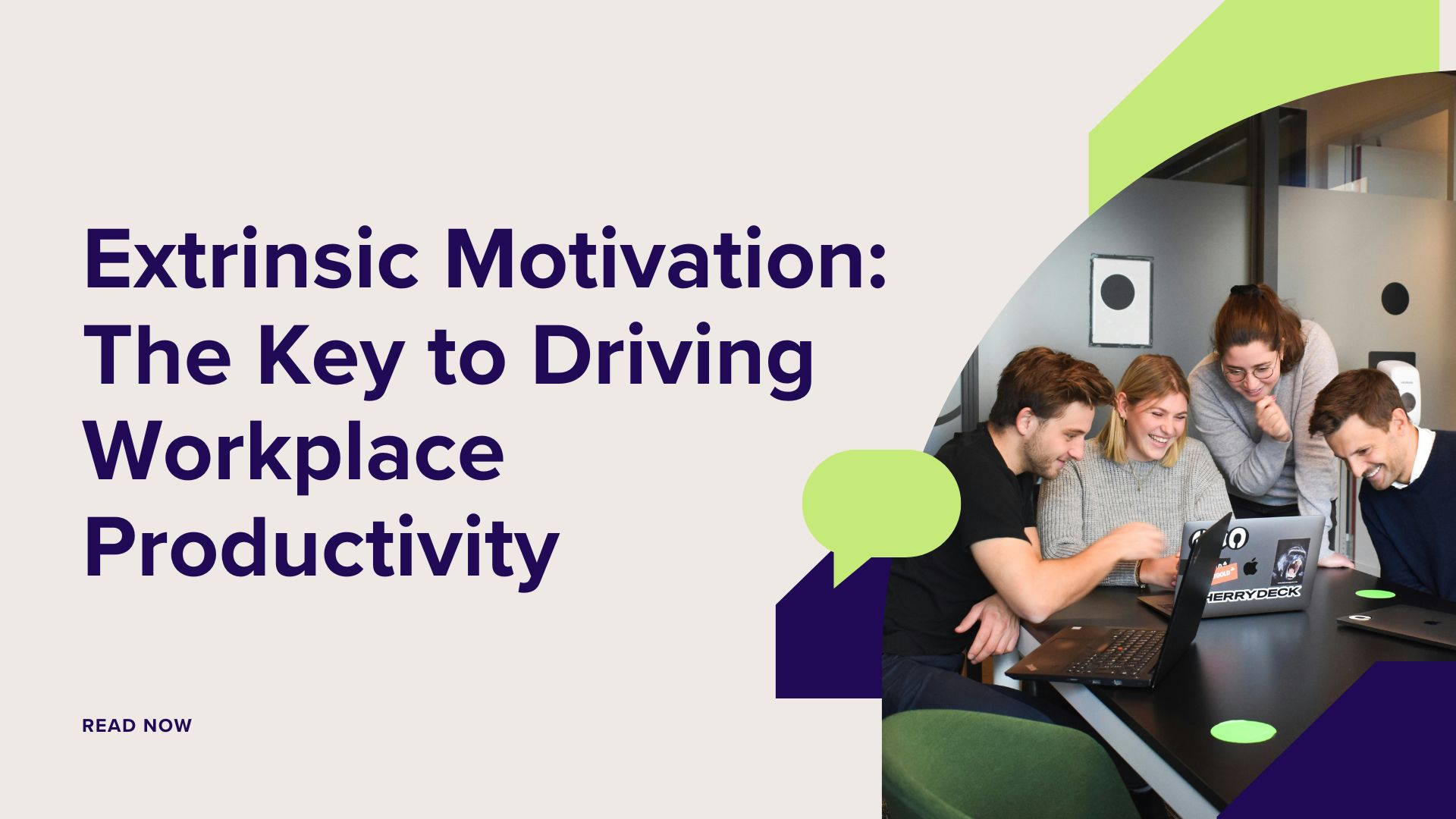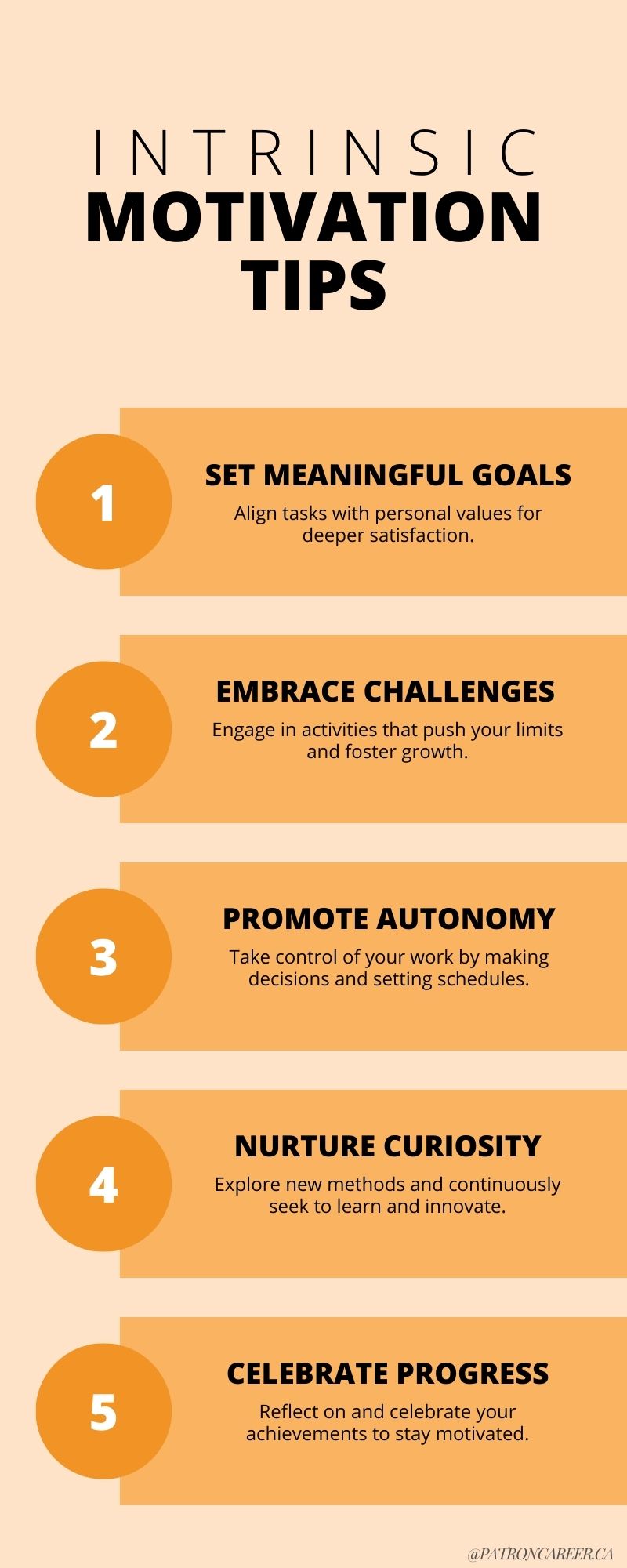
Extrinsic Motivation
10 June, 2024
Patron Career Staffing firmly believes in adopting a tailored approach to meet temporary and permanent recruitment needs. We safeguard the interest of our clients by finding such workers who are knowledgeable and reliable.
About UsNeed help? Make a Call
32 Dundas Street East Unit A, L5A1W2

There are times when you engross yourself in an activity simply because you enjoy it or associate it with learning or new experiences. Your act is independent of outer rewards and is solely driven by the personal satisfaction, enjoyment or triumph you derive from it. That is intrinsic motivation for you- a behaviour driven by internal rewards. Unlike extrinsic motivation, which relies on external rewards or pressures, intrinsic motivation originates from within, inspiring people to pursue their passions and goals for the sheer joy and fulfilment they bring.
For all the managers out there, perplexed as to how to boost workplace motivation, intrinsic motivation can prove to be an incredible alternative to performance-based rewards. Gear up, as we take you into the realm of intrinsic motivation, its kinds, examples and other nuances that make it a significant piece of the employee-lifecycle puzzle.
Understanding Intrinsic Motivation
The nine-to-five ones work so tediously that they may not always end up in zeal. They need to be reminded constantly to do things they enjoy most. Maybe walk down a pretty lane, visit your favourite pet cafe, or play a game. Intrinsically motivated individuals perform an activity that brings them joy. They pursue an activity for its fulfilling nature. This motivation is not dependent on external rewards such as money or praise but rather on the pleasure and satisfaction one experiences from the activity itself. People who are intrinsically motivated engage in tasks with a sense of curiosity, creativity, and a desire for mastery.
Read: Elevating Employee Morale
Does Intrinsic Motivation Impact Internal Growth?
Yes. The psychology behind this motivation depicts that when employees pursue activities they’re genuinely interested in, the likeliness to develop new skills and knowledge increases. A senior employee who mentors, and guides junior colleagues because he finds it fulfilling to share his knowledge is a good example. Even in personal life, an individual may spend hours working on a personal project, such as writing a novel or building a model, because they find the process deeply satisfying. Intrinsic motivation works magic on you, which may be uncovered with time leading to continuous growth and self-improvement.

The 3 Types of Intrinsic Motivation
Intrinsic motivation can be categorized into three types, each dependent on different inner factors.
1. Autonomy
The drive to be in control of one’s life is autonomy. Human beings are devoted to taking control of their actions, words and decisions. This urge is characterized by self-direction, flexibility and ownership of one’s work. For example, in the organizational setup, an employee who is given the choice to select a project of his liking or proficiency is likely to be more engaged and motivated.
2. Mastery
Mastery is the human desire to improve and excel at one’s skills. It involves a continuous quest for self-improvement and a sense of accomplishment when progress is made. Mastery is correlated to self-esteem. When you do good at your job, you receive praise which boosts your self-respect. A programmer who spends extra time learning new coding languages and techniques to become better at his job is motivated by mastery.
3. Purpose
Without a purpose, goals and visions become meaningless. When it comes to the workplace, purpose is the drive to do meaningful work and aligns well with our personal beliefs, ethics and values. An employee who joins a law firm, because he believes in their mission, is one such example. At a personal level, one may be intrinsically motivated by a purpose to work for a charitable organization to fund a local shelter.
Read: Extrinsic Motivation
Example of Intrinsic Motivation at Work
Intrinsic motivation drives the organizational behaviour of employees, here’s how:
Cultivating Intrinsic Motivation at Work
In the workplace, employers can imbibe intrinsic motivation in employees by:
1. Empowering teams: don’t just be a manager, be a leader and give employees autonomy to function better.
2. Creating a motivating work zone: mend the workplace from an overworked one to a relaxing one.
3. Boosting professional growth: give employees to expand beyond their capacities with new opportunities.
4. Recognizing Achievements: Acknowledge and celebrate employees' accomplishments and milestones.
Practical Tips to Enhance Your Intrinsic Motivation
In the workplace, consider using the following tips to build a highly motivated workforce:
1. Set personal goals: find what you are most fond of and build SMART achievable goals around it.
2. Seek challenges: engage in challenging activities and flourish your abilities.
3. Reflect: the activities you pursue should align with your values and demeanour.
4. Have fun: don’t focus on the outcome, enjoy the process.
5. Pal up with good people: build connections that support you and encourage you to grow.
Practice Better Motivation in The Workplace
Level up the motivation game in your workplace by nurturing intrinsic motivation. Whether in education, the workplace, or personal pursuits, fostering intrinsic motivation leads to more meaningful and enriching experiences.

